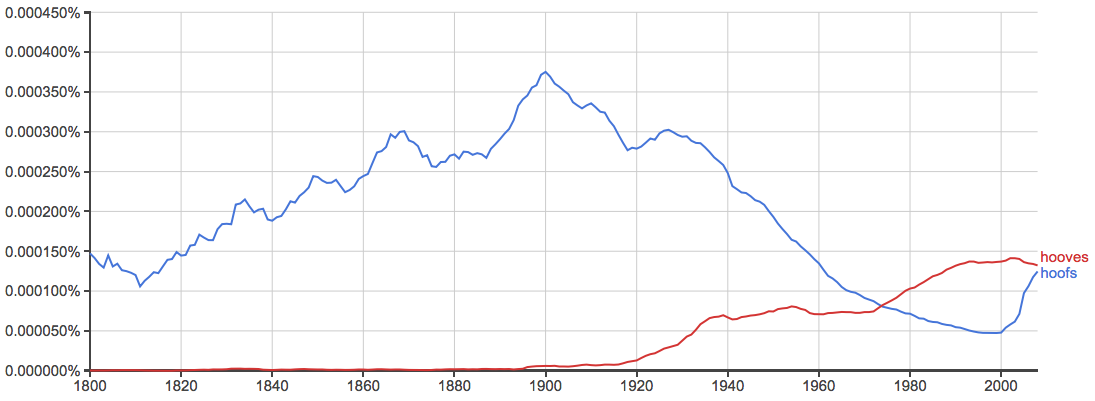As languages evolve, spellings can change and some words may even develop more than one version.
Hoofs and hooves, for instance, are two versions of the same noun. Both versions have been in use for many years, but today, one is much more common than the other.
It’s unclear why this shift in preferences happened—roofs, a similar word, doesn’t have a commonly used rooves variant.
Still, if you are writing for professional or academic reasons, you will need to choose the words you use carefully. While it is unlikely that your manuscript will be rejected on the basis of hooves vs. hoofs, it can’t hurt to be sure.
What is the Difference Between Hoofs and Hooves?
In this post, I will compare hooves vs hoofs. I will use each of these words in at least one example sentence, so you can see them in context. Plus, I will show you a helpful memory tool that you can use to make choosing hooves or hoofs easier.
When to Use Hoofs
 What does hoofs mean? Hoofs is the older, traditional plural form hoof. Its singular form is hoof, which means the hardened feet of certain animals. Most such animals have four legs, with a hoof on each one, so the plural form of this noun is more common than its singular counterpart.
What does hoofs mean? Hoofs is the older, traditional plural form hoof. Its singular form is hoof, which means the hardened feet of certain animals. Most such animals have four legs, with a hoof on each one, so the plural form of this noun is more common than its singular counterpart.
For example,
- My old Shetland pony’s hoofs are worn out, and I cannot ride her anymore.
- You cannot replace hoofs on a horse the way you can replace hiking boots on a human.
- Roosevelt was a great protector of horses, too. He rode Bleistein only at a walk when they were on paved surfaces to protect the horse’s hoofs. –The Washington Post
Other animals also have hoofs, like deer, pigs, giraffes, and Malayan tapirs. Hoofs are specific to mammals—all animals with hoofs are mammals, but not all mammals have hoofs. Other classes of animals, like fish or invertebrates, do not have hoofs.
For a good 250 years, hoofs was the primary plural form of hoof—analogized with the word roof, which has roofs as a plural form. It wasn’t until the last 40-50 years that hooves began to pick up steam.
When to Use Hooves
 Hooves is the newer, and now more common, plural form of the hoof.
Hooves is the newer, and now more common, plural form of the hoof.
- Mountain goats have hooves on their feet that make climbing around on mountains much easier.
- Domestic horses wear metal shoes on their hooves to protect them from damage when riding.
- Carriage horses wear special horse shoes to protect their hooves and give them traction. –New York Post
As mentioned above, hooves didn’t really pick up steam until the 20th century, and didn’t eclipse hoofs in usage until the 1970s. Today, however, hooves is much more common in print sources.

This chart graphs hooves vs. hoofs over time, and you can see that hooves is now more common that hoofs.
Hoofs and hooves are interchangeable, and both are accepted plurals. They have all the same meanings, and can be used in the same contexts. Bryan Garner, in his book Garner’s Modern English Usage, estimates hooves to be five times more common in journalistic writing and two times more common in book publishing. The graphs doesn’t show a disparity quite that large, but it does show that hooves has clearly gained ground in recent years.
Trick to Remember the Difference
Each of these words is technically the same plural noun. Until 40 years ago, hoofs was more common, but today, hooves predominates.
If you need a reminder that hooves is the modern standard form of this word, remember that hooves has a slant rhyme with the word shoes, and shoes go on hooves.
Summary
Is it hoofs or hooves? Hoofs and hooves are variants of a plural noun that refers to part of the feet of some mammals.
- Both spellings are legitimate.
- Today, hooves is the predominant form.
To conclude, use hooves unless an editor or publisher recommends hoofs instead.
Contents
